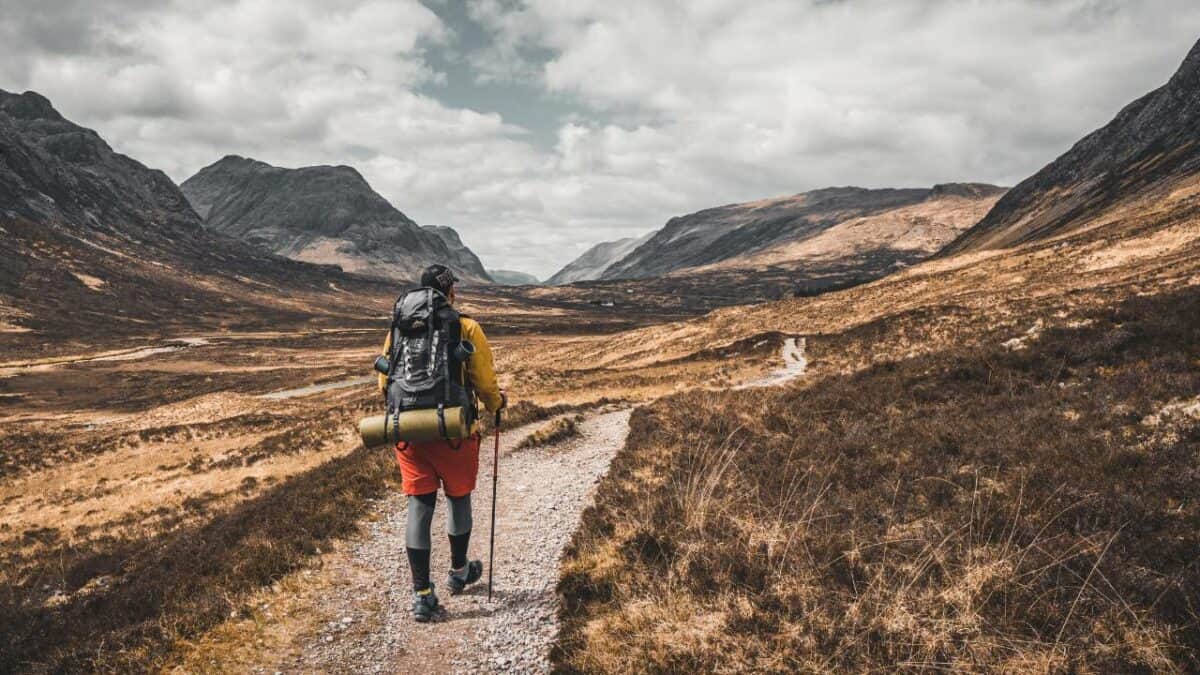Winding its way past the spectacular Loch Lomond towards emerald hillsides and ending at the outdoor capital of the UK – Fort William – the West Highland Way takes hikers through some of Scotland’s most magnificent scenery.
Whether you prefer staying at developed campgrounds or pitching your tent in the wild, there’s an abundance of excellent places to spend the night on this world-famous hiking route. Here’s everything you need to know about campsites and wild camping on the West Highland Way.
Best Campsites on the West Highland Way
West Highland Way Campsite
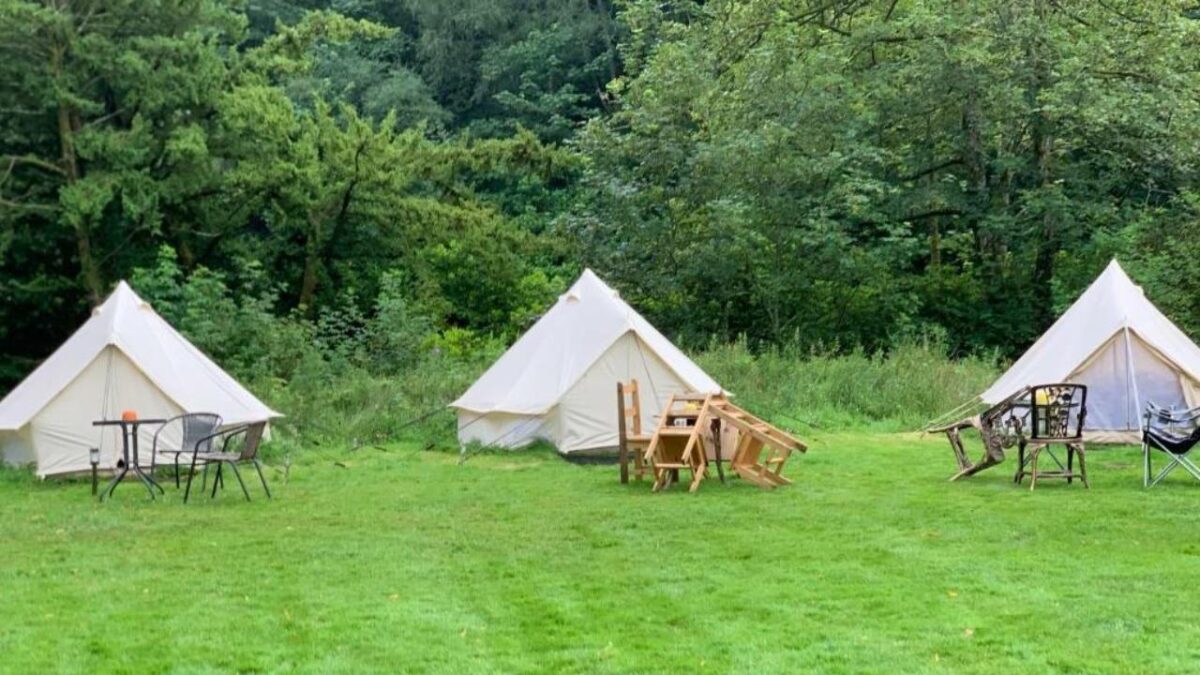
- Map
- Call +44 7488 261 730 to reserve
Milngavie is the official starting point of the West Highland Way. This quaint little town can be reached in less than half an hour from Glasgow. However, there are no campsites in Milngavie – if you arrive late, you’ll need to stay indoors or at the West Highland Way Campsite, located three miles north of town.
The campsite owners advertise it as a “campground located just steps away from WHW’s starting point”. While this is undoubtedly inaccurate, the campsite still has an excellent location and can be a good place for your first stay on the hike. It is open year-round.
In addition to hardstanding pitches (with electric hookups) and standard grass pitches, the West Highland Way Campsite also features several furnished bell tents and a shepherd’s hut. The whole place is surrounded by lush woodland and has a tranquil, relaxing atmosphere.
Regarding amenities and facilities, campers can expect toilets, showers, a laundrette, a communal BBQ area, a café/restaurant, a TV room, and free Wi-Fi throughout the campsite. Open fires are allowed, as are pets. Finally, there is a vast array of activities to participate in, including horse riding, fishing, and golf.
For those seeking a more untouched experience, there are also wild camping spots dotted around the outskirts of Glasgow. These offer a unique opportunity to connect directly with the Scottish wilderness, providing a serene backdrop to your adventure.
Drymen Camping
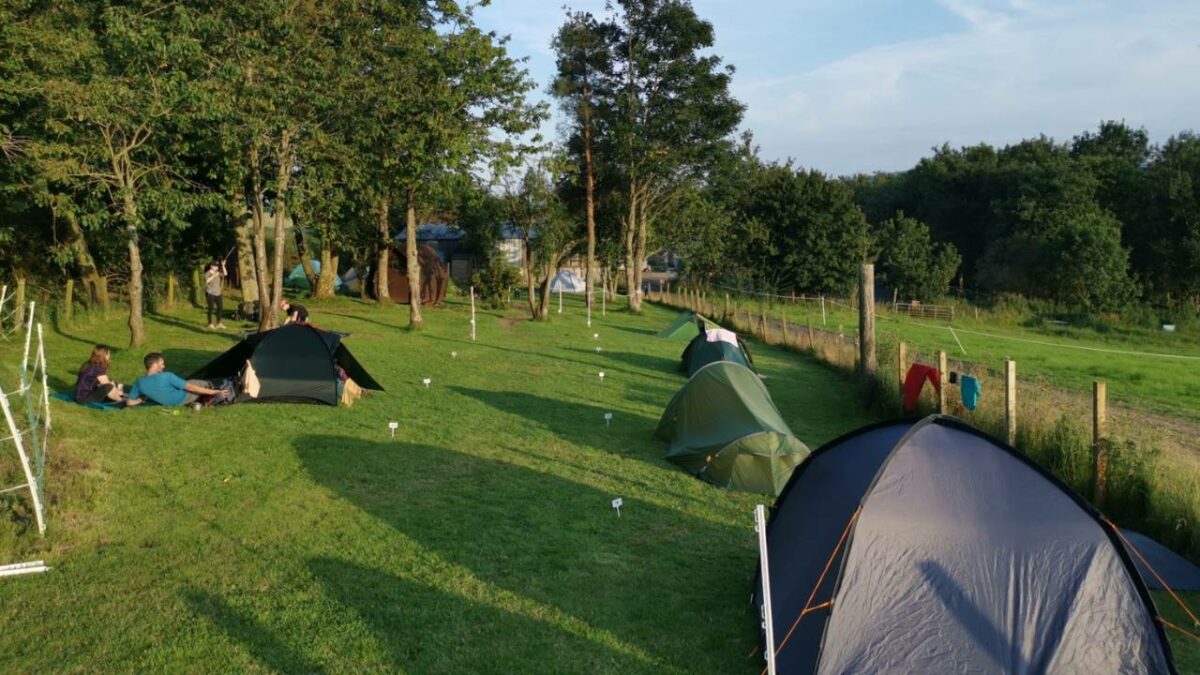
- Map
- Call +44 7494 144 064 to reserve
Drymen Camping is the best campsite to stay at during the next part of your walk. It is close to the village of Drymen, known as the “gateway to East Loch Lomond”. While staying at the campground, visit the village itself – it features a couple of excellent (and very old) inns.
While walking the West Highland Way south-north, you’ll see Drymen Camping on your left side, half an hour before reaching the village. Surrounded by picturesque farms and rolling hills, the campground is quiet and soothing. Moreover, it’s quite literally on the WHW – the route continues north just outside the entrance.
Most of the campsite’s facilities have been updated recently, and some new ones have also been added. For example, Drymen Camping now also offers glamping – all campers need is a sleeping bag, and if you don’t have one, you can rent it directly at the campsite. There is also a large communal area where you can meet other hikers and prepare your favourite food.
Drymen Camping’s facilities include charging points, free Wi-Fi, hot walk-in showers, toilets, potable water, and a dishwashing sink. As mentioned above, the campsite is very close to the village of the same name, which, besides charming inns, also features a taxi service, bus connections, a health centre, a post office, ATMs, and grocery stores.
Milarrochy Bay Camping
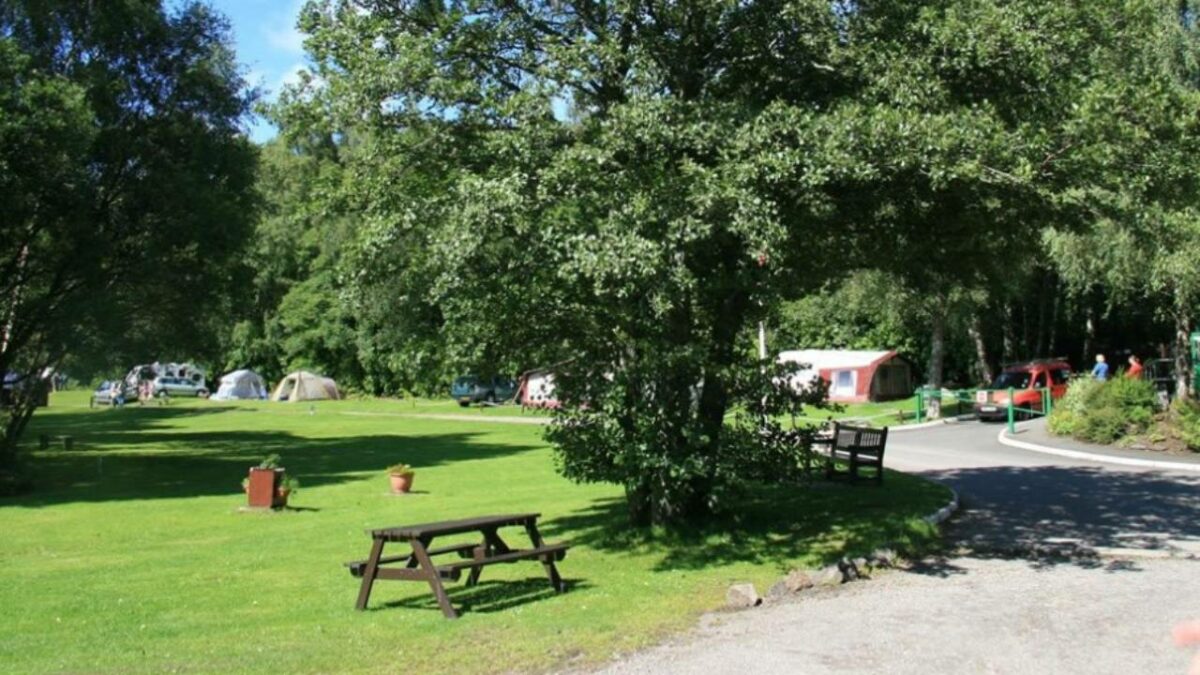
- Map
- Call +44 1360 870 236 to reserve
As you’re walking northward from Drymen along Loch Lomond’s eastern shore, you will have several excellent campsites at your disposal. The southernmost one – and, therefore, the first you’ll reach – is Milarrochy Bay Camping.
The best thing about this particular WHW campsite is undoubtedly its location. Those staying here will have spectacular views over Loch Lomond and beyond. Moreover, the campground is nestled in a wooded area – a peaceful and calming atmosphere. Furthermore, even if you’re not walking the West Highland Way, Milarrochy Bay Camping can be an excellent base for exploring this part of Scotland.
Most of the people who’ve stayed here rave about the friendliness of the campsite’s staff, as well as about the cleanliness of its facilities and its proximity to the water’s edge. While camping at Milarrochy, you’ll be close to Drymen (restaurants, inns, and shops) and to Conic Hill (only 1.5 miles), a sharp little summit offering some of the most unforgettable views in all of Britain.
Those planning to stay at Milarrochy Bay Camping can expect hot showers, flushing toilets, washbasins, and free Wi-Fi. There is also a children’s play area, dedicated accessible facilities, and a designated dog-walking area. Pitches include hardstanding pitches with electric hookups, grass pitches with electric hookups, grass-only pitches, and camp-ready on-site tents.
Cashel Campsite
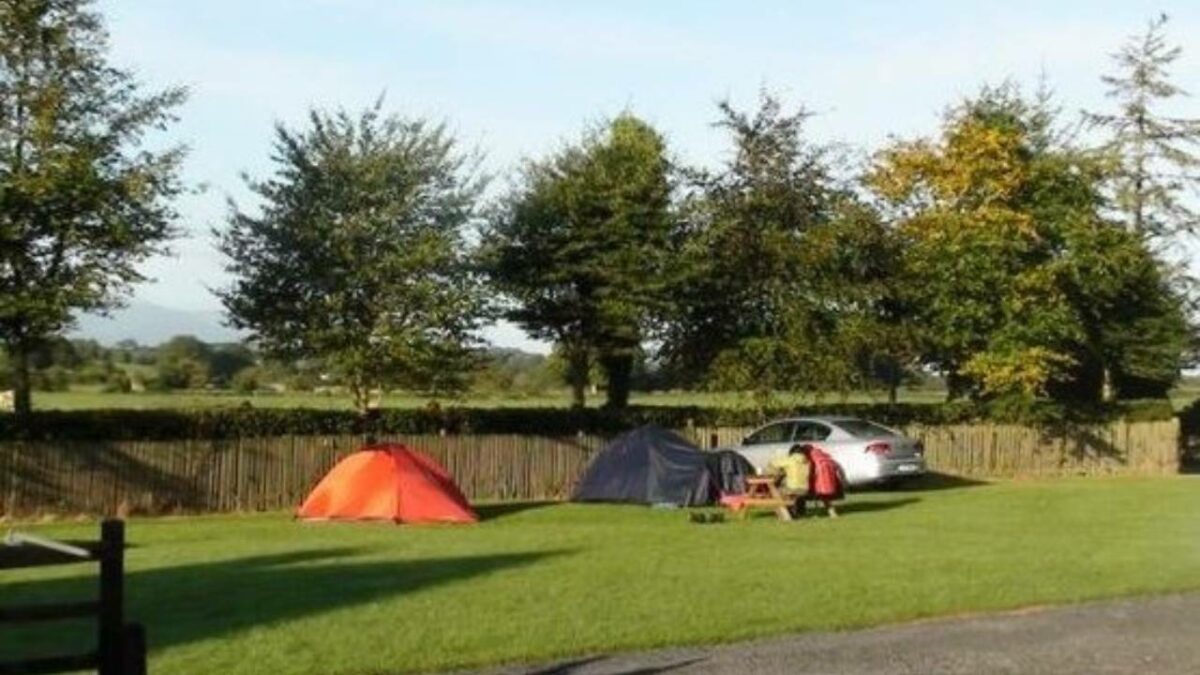
- Map
- Call +44 1360 870 234 to reserve
Only a mile and a half northwest of Milarrochy is Cashel Campsite, another excellent lochside campground in the area. Like the campsite described above, this one also boasts stunning water views and embodies everything Scotland is well-known for, such as highland scenery and dense forests.
One of the most important things to say about Cashel Campsite is that an advance reservation requires a 25% deposit when booking. Furthermore, unlike some of its rivals, it is not open year-round – only from early spring to mid-autumn. The WHW passes right next to the campsite’s entrance.
This is one of the most well-equipped campgrounds in the region. At Cashel Campsite, you will find laundry facilities, drinking tap water, dishwashing sinks, hot showers, toilets, fishing spots, and a children’s play area. The campground welcomes campervans, touring caravans, motorhomes, and tent campers.
One particularly great thing about this large campsite is that it also features facilities to store, launch, and recover boats. As such, it’s the best option for folks wishing to explore Scotland’s lochs by travelling with campervans and carrying personal watercraft. Finally, nearby attractions worth visiting include the Oak Tree Inn (Balmaha), Mugdock Country Park, Dumbarton Castle, Hill House (Argyll), and Loch Katrine.
Sallochy Campsite
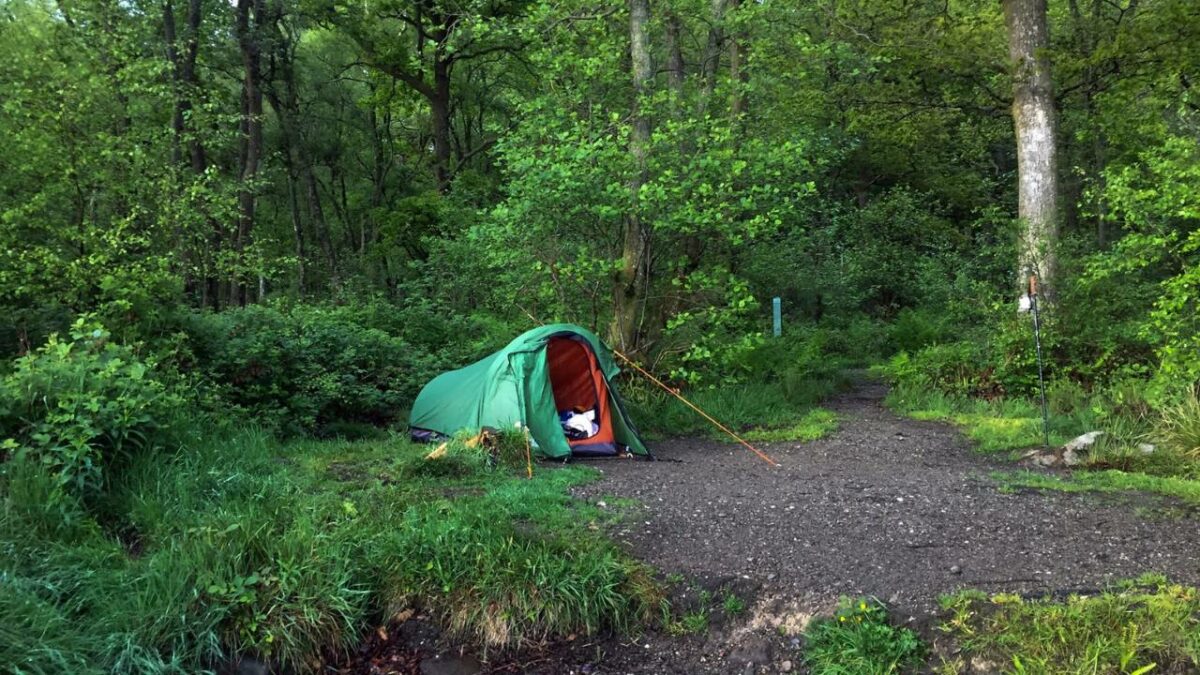
- Map
- Call +44 1360 870 142 to reserve
Like the previous two places, this one can be easily accessed from the trail and provides magnificent views of Loch Lomond. However, Sallochy is a tent-only campsite – those with motorhomes will have to stay elsewhere.
Open from March to November, Sallochy is a sizeable place with many pitches situated in different locations around the site. A 24-hour advanced booking is required, and there’s a 3-night maximum stay. Unlike in the case of Cashel Campsite, you’ll have to pay in full when booking (up to £10 per adult per night during the summer nights).
The best thing about this campground is that it has its own beach – Sallochy Bay. Although small, the beach is a lovely relaxing spot with great views of Loch Lomond. It is also great for small boat launching and swimming. All the campsite’s pitches are 50 yards from the shore.
Unfortunately, Sallochy Campsite features no shower facilities. It does, however, have toilets, and it permits campfires and pets. Overall, it is one of the more basic WHW campsites and an ideal option for folks looking for a “wilder” camping experience.
Beinglas Campsite
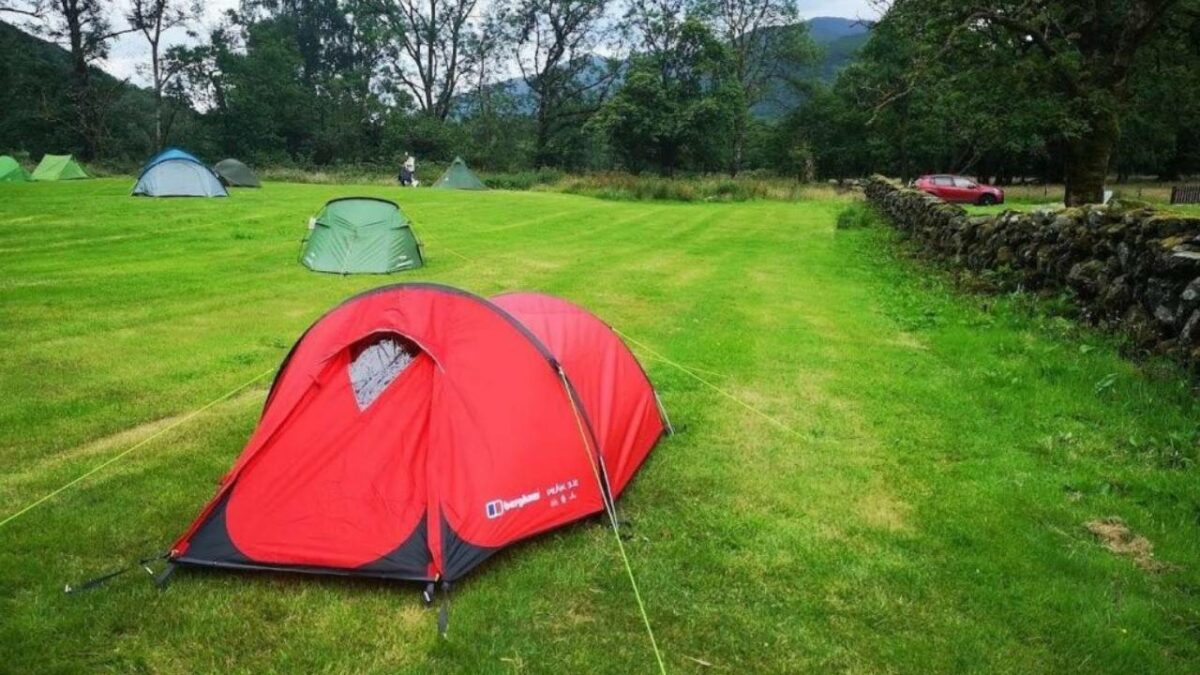
- Map
- Use info@beinglascampsite.co.uk to reserve
For hikers planning to complete the West Highland Way in a week or so, the third stage is the longest one. During this phase, the most traditional stopping point is Beinglas Campsite, located next to A82 and River Falloch, some 15 miles north of Sallochy Campsite. It’s one of the most well-equipped campgrounds in this part of Scotland.
But let’s get the bad stuff out of the way first – Beinglas Campsite is rampant with midges. Those planning to stay here should bring a quality bug repellant and a head net. With that out of the way, this is an excellent place to stay: the surroundings are very picturesque, and the atmosphere is as peaceful as possible.
There are a variety of accommodation options available at Beinglas. The campsite welcomes motorhomes and campervans, features standard tent pitches (no electric hookups), and also offers well-equipped en-suite rooms and hiking huts. The huts deserve particular praise – each has an indoor washing area and radiators to keep guests warm.
Regarding facilities, expect electronics charging, free Wi-Fi, a bar/restaurant, laundry facilities, an indoor cooking area, hot showers, toilets, and potable water. Another thing worth mentioning is that it takes a 10-minute walk to reach the village of Inverarnan from the campsite. Visit the Drovers Inn there – it has an excellent atmosphere with delicious daily meals and live music every weekend.
Strathfillan Wigwams
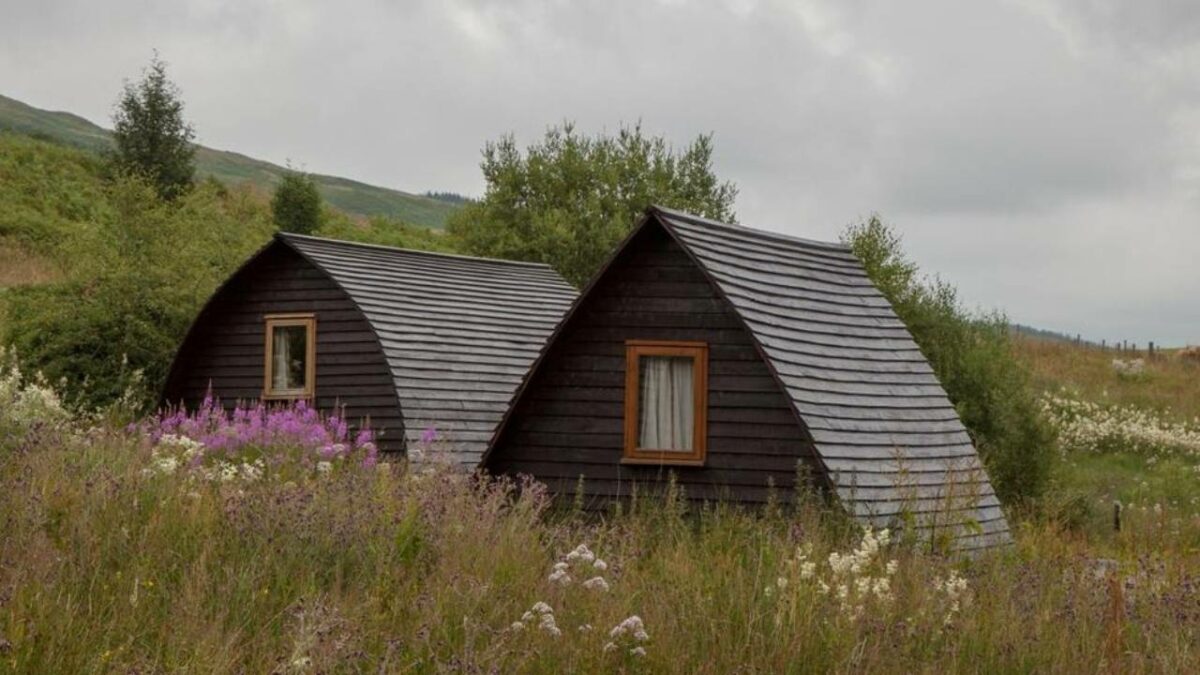
- Map
- Call +44 1838 400 251 to reserve
Located on a working farm in West Highlands, near the famous Loch Lomond and amidst the forested glens of Trossach National Park, Strathfillan Wigwams is one of the most unique WHM campsites on my list. It is ideal for both regular campers and those wishing to spice up their hiking/camping adventure with luxurious glamping.
The camping field of Strathfillan Wigwams is very spacious and allows WHW walkers to choose between standard and electric tent pitches. However, as the name of this campsite suggests, the main attraction is the collection of fully-equipped wigwams. All of them have power points, fridges, lighting, and heating. There is also a fire pit in front of each wigwam.
On-site facilities include a communal kitchen, a shop, a BBQ area, bike hire, laundry service, shower/toilet block, and communal fire pits. The nearest settlement – the picturesque village of Tyndrum – is only a mile and a half away. It’s a popular tourist destination where you can stock up on supplies and eat/drink in one of its cafes and inns.
Finally, it is worth mentioning that Strathfillan Wigwams is among the most atmospheric campsites on my list. The place is surrounded by thick woodlands full of beautiful wildflowers and chirping songbirds. As such, it is an ideal destination for WHW walkers seeking a deep connection with nature even when they’re not trekking the route.
Tyndrum Holiday Park
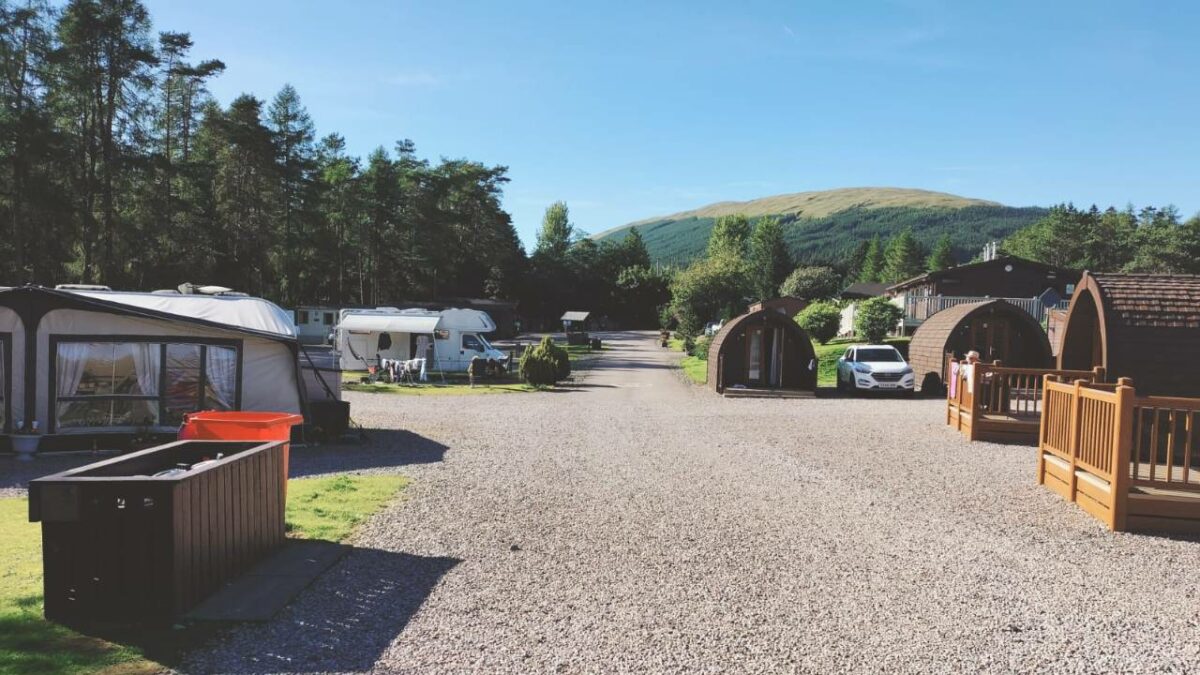
- Map
- Call +44 3331 881 930 to reserve
The next WHW campsite is located in the village of Tyndrum, just north of the campground described above. It is less scenic and considerably larger (as it caters primarily to motorhomes) than most campsites on my list. However, it’s still an excellent place to stay, particularly if you’re looking for a campground inside instead of outside a settlement.
Tyndrum Holiday Park offers a variety of accommodation options. These include hot tub pods (£250 per night – the most luxurious options), hiker pods (£50-75 per night), and standard caravan pitches (£27 per night). While it’s true that most people staying here are motorhome campers, Tyndrum Holiday Park also offers regular tent pitches for £12 per night.
The park advertises its facilities as “second to none”, and this isn’t far from the truth. Besides the modern – and very clean – toilet block, the campground also features a TV ariel point, private showers, laundry service, free Wi-Fi, electricity points, a playpark, and an on-site shop. The campsite is also dog-friendly.
The most apparent advantage of Tyndrum Holiday Park is its location: while staying here, you’ll be within walking distance of the village’s shops and inns. Even those not walking the West Highland Way will find this place an excellent base for exploring the Scottish Highlands. Remember to bring quality midge repellant, though – the camp is beside a river.
By The Way Hostel & Campsite
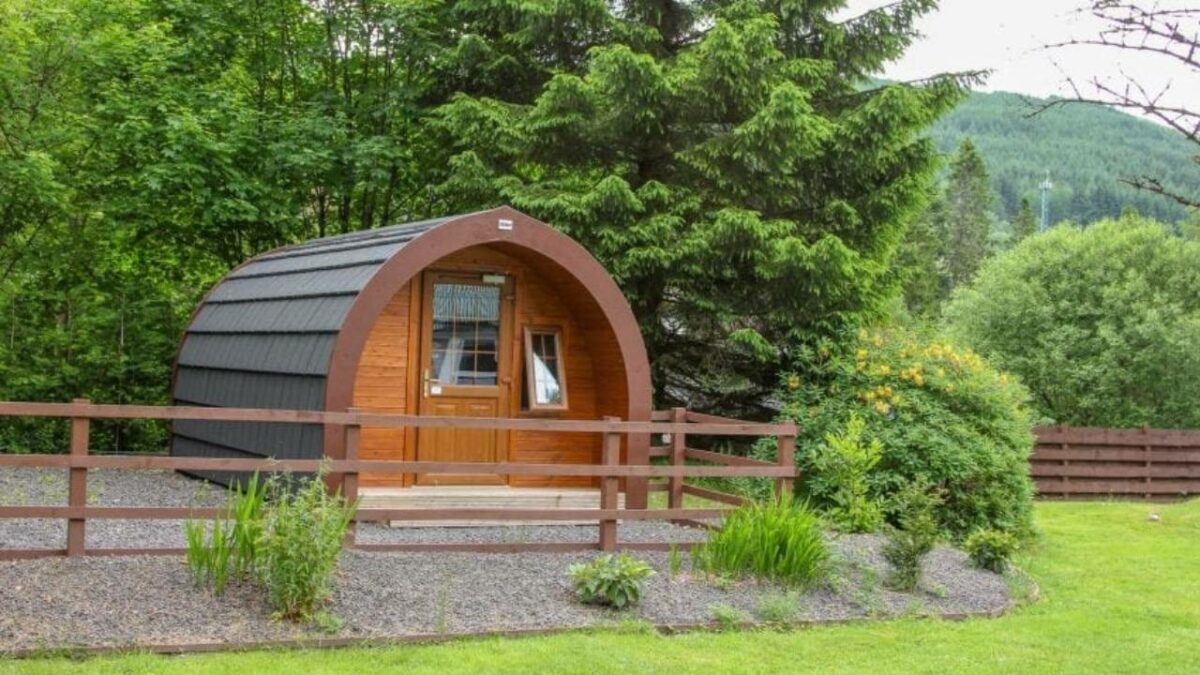
- Map
- Call +44 1838 400 333 to reserve
The next campsite is just down the river from the one described above, on the western side of the village of Tyndrum. As such, it’s yet another well-located campground on my list and one that provides easy access to shops and inns. It’s an excellent option for tent campers who want to spend the night under the stars far away from motorhomes and campervans.
That’s because By The Way Hostel & Campsite permits only tent camping. Moreover, campers can stay here only if they use a 1-person or a 2-person tent – larger tents are not allowed. Also, camping here is not permitted after rainy weather, as the on-site ground becomes quite soggy.
That is also why this is the only campsite on the list featuring a designated drying room for boots and clothes. Other facilities and amenities include free Wi-Fi, a bike store, hot showers, toilets, a dryer, a washing machine, essential kitchen appliances, and an indoor pot-washing area. In other words, By The Way is a genuinely well-equipped WHW campsite.
The most significant difference between this campground and its rival (Tyndrum Holiday Park) is that the former is surrounded by lush woodland on all four sides. As such, it is serene and tranquil, and you’re bound to fall in love with its grassy areas, picnic tables, and charming wooden huts. Another thing that contributes to the campsite’s peaceful atmosphere is the “no noise” policy from 10.00 pm.
Glencoe Mountain Resort
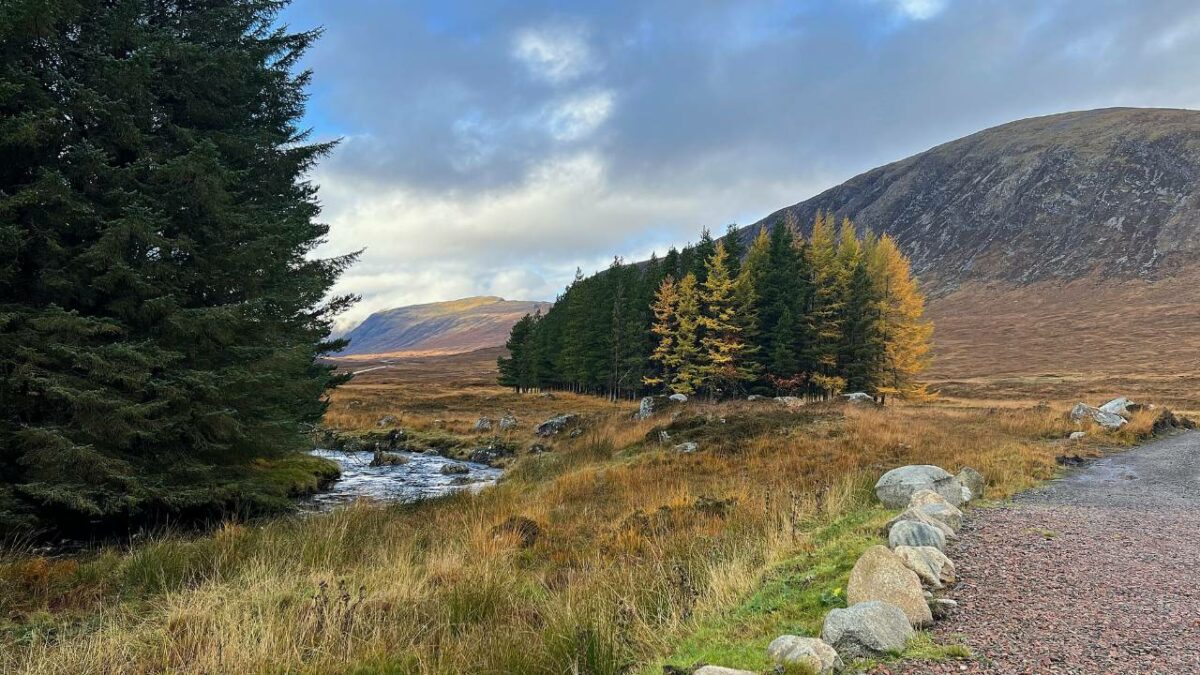
- Map
- Call +44 1855 851 226 to reserve
The best WHW campsite between the Bridge of Orchy and Glencoe is the Glencoe Mountain Resort. Nestled deep in the Highlands, some 15 miles southeast of Ben Nevis, this place can be accessed by taking a slight detour. You’ll enjoy grassy, flat pitches and modern amenities for a small fee.
As mentioned above, this place is off the West Highland Way – unlike most campsites described above – but its location still deserves particular praise. Glencoe Mountain Resort is located on Rannoch Moor, i.e. in a region of exceptional natural beauty that offers breathtaking views of the majestic Buachaille Etive Mor. Expect micro-lodges, electric hookups, and a spacious camping area.
Another difference between this place and the rest of the campsites included on the list is that it allows guests to participate in activities such as climbing, tubing, mountain biking, and chairlift riding. And that’s just for the summer – visitors can use the resort’s steep and long ski run for sledging, snowboarding, and skiing in winter.
The resort’s tent pitches are set within a forested area. Those who stay in tents can use the drying rooms and hot showers at the resort’s on-site café. Those coming in campervans can use the electric hookups – each pitch has one. Finally, the micro-lodges mentioned above are snug, well-insulated, and equipped with comfortable mattresses. Staying in one will cost you £75 per night.
Blackwater Hostel
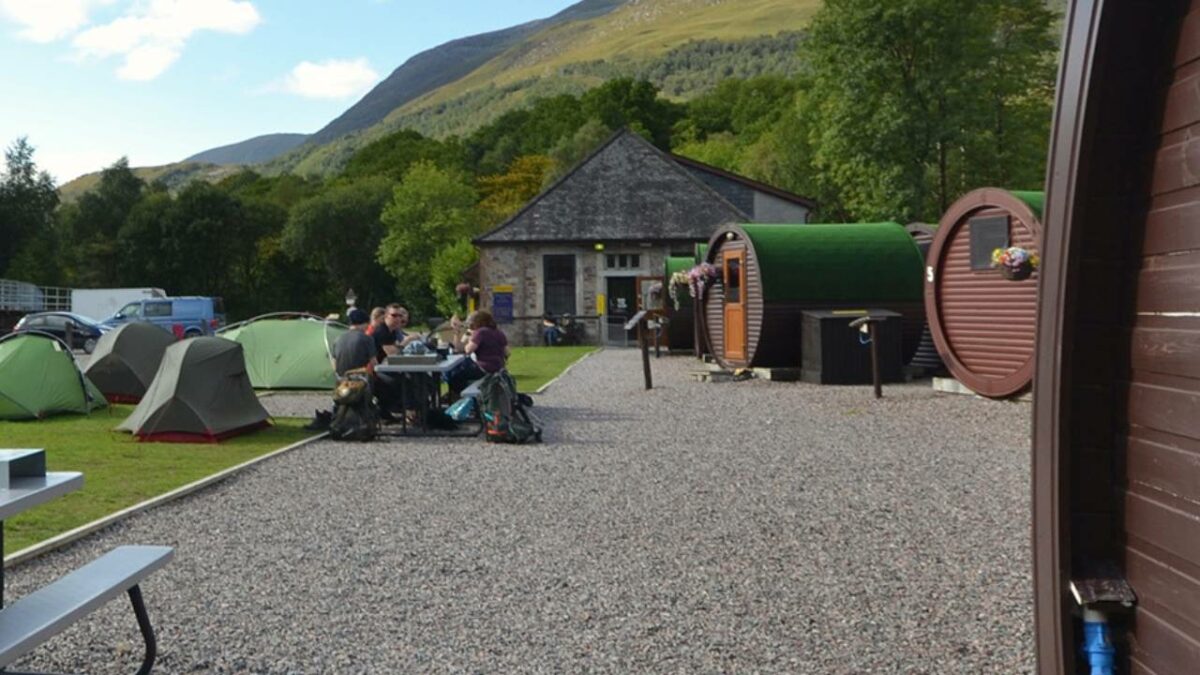
- Map
- Call +44 1855 831 253 to reserve
Once you’re done with the stretch between Glencoe and Kinlochleven, you can rest at a lovely campsite immediately at the village’s entrance. Situated alongside River Leven within walking distance of the centre of Kinlochleven, Blackwater Hostel caters for a wide range of budgets – from standard camping to luxurious glamping.
Those wishing to stay inside can do so in the hostel building itself. There are ten variously-sized en-suite rooms, each with a comfortable bunk bed, TV, double glazing, and central heating. Guests can use the hostel’s dining area, communal kitchen, drying rooms, and free Wi-Fi. Folks interested in glamping, on the other hand, can stay in luxurious glamping pods overlooking the river.
However, most people walking the West Highland Way are regular tent campers, and if you’re one of them, you’ll appreciate that Blackwater Hostel also has a tent camping area. In addition to grassy, level pitches, tent campers can also use a covered pot-washing site, a drying room, charging points, and the toilet/shower block. They also have access to free Wi-Fi.
While staying here, you’ll also have the opportunity to explore Kinlochleven and its breathtaking surroundings. After all, many WHW walkers choose this village as their last stop before heading north to Fort William and the route’s end. Make sure to visit the Aluminum Story, an excellent industrial heritage museum (1-minute walk from the campsite).
Glen Nevis Caravan and Camping Park
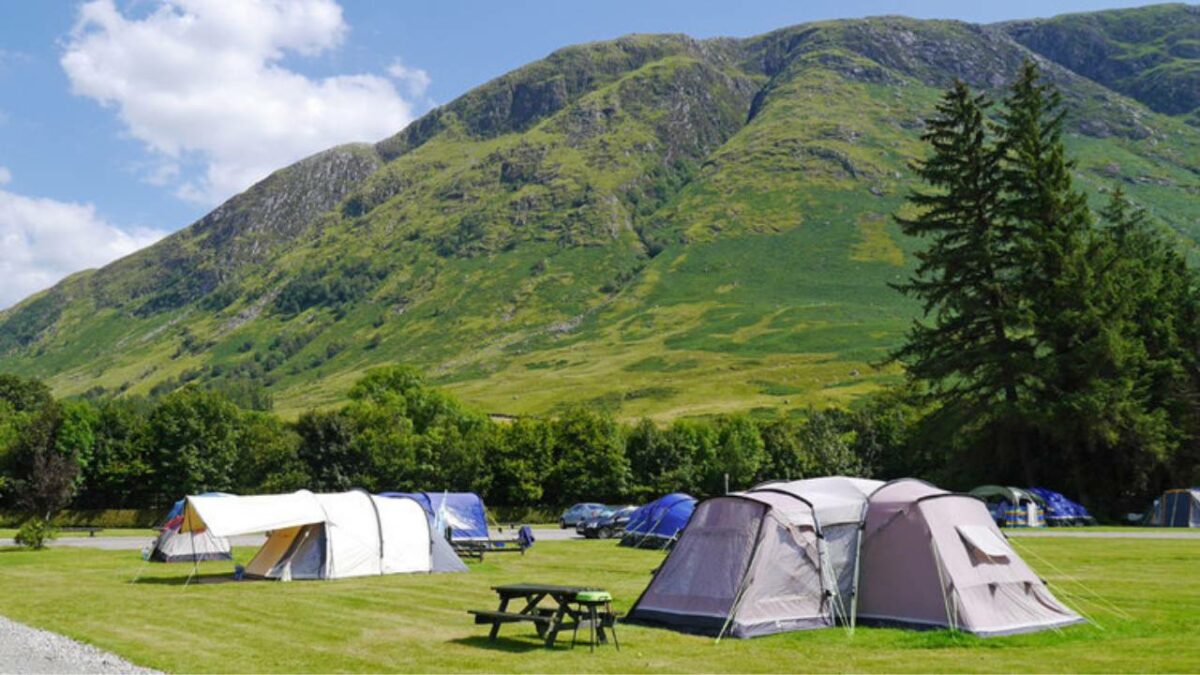
- Map
- Call +44 1397 702 191 to reserve
It is common for walkers to treat themselves to a room with four walls and a real bed after completing the West Highland Way. Still, if you’re a hardcore outdoor enthusiast, you’ll appreciate that there’s still an option of staying at a campsite, even at the route’s very end. The Glen Nevis Caravan and Camping Park is located less than two miles south of Fort William.
Set amid astonishing Highland scenery, this place welcomes all types of campers. In addition to standard grass-only pitches, the campground also features grass pitches supplied with electric hookups and hardstanding pitches with or without electricity. Both the caravan and the tent area are very roomy and provide plenty of space for visitors to find an ideal pitch.
The Glen Nevis Caravan and Camping Park is also one of the most well-equipped campsites on my list in terms of facilities. Expect hot showers, flushing toilets, dedicated accessible facilities, washbasins, and free Wi-Fi. Other on-site amenities include a campervan service point, a shop, a restaurant, and a children’s play area.
Moreover, due to the campsite’s proximity to Fort William, guests can easily visit this major tourist centre whenever they want and use its many services. The outdoor capital of the UK has plenty of eateries, pubs, and additional accommodation options.
Wild Camping on the West Highland Way
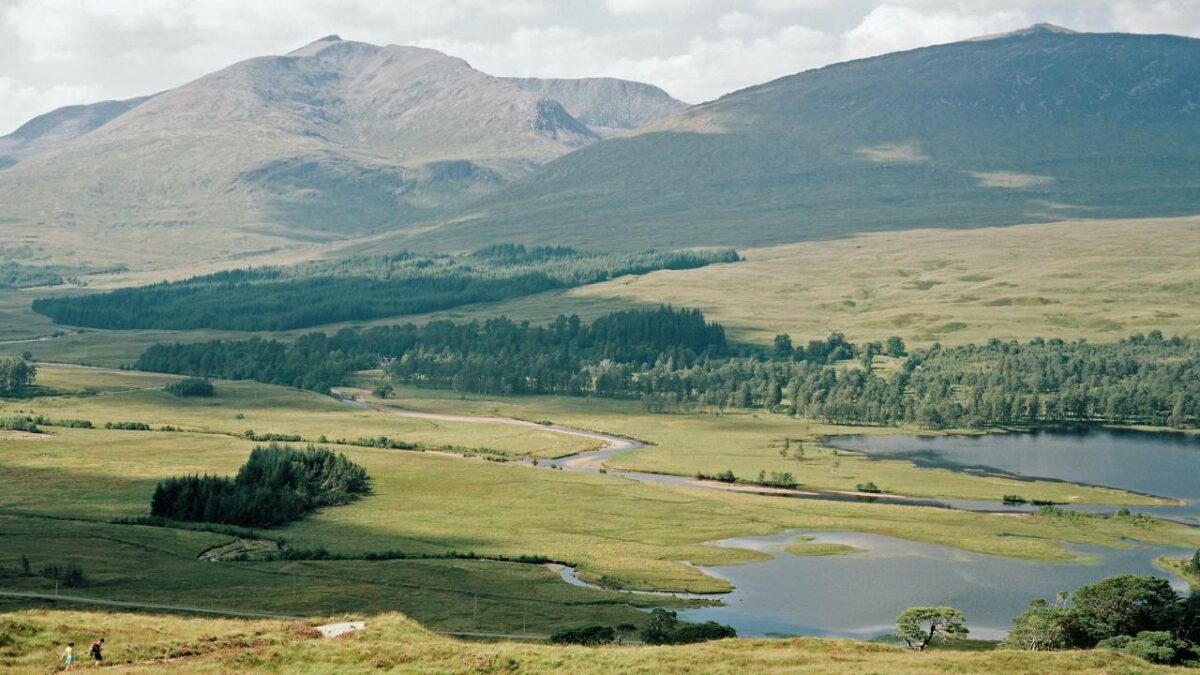
For most sections of the West Highland Way, wild camping is permitted, allowing you to choose your own slice of paradise for the night. You’ll find yourself spoiled for choice as you traverse the emerald hillsides and meander through picturesque woodlands. There’s something truly liberating about finding the perfect spot to call home, far away from the hustle and bustle of the world.
However, it’s important to note that there are specific regulations during the high season and along the breathtaking shores of Loch Lomond. From early spring to late summer, camping bylaws are in place to protect the delicate environment. Along Loch Lomond, you’ll need to get a permit to camp during this period. Don’t fret, though! Acquiring a permit is affordable, straightforward, and can be booked up to a month in advance.
Now, without further ado, here are the best wild camping spots along the West Highland Way:
Lochan Maol Dhuinne
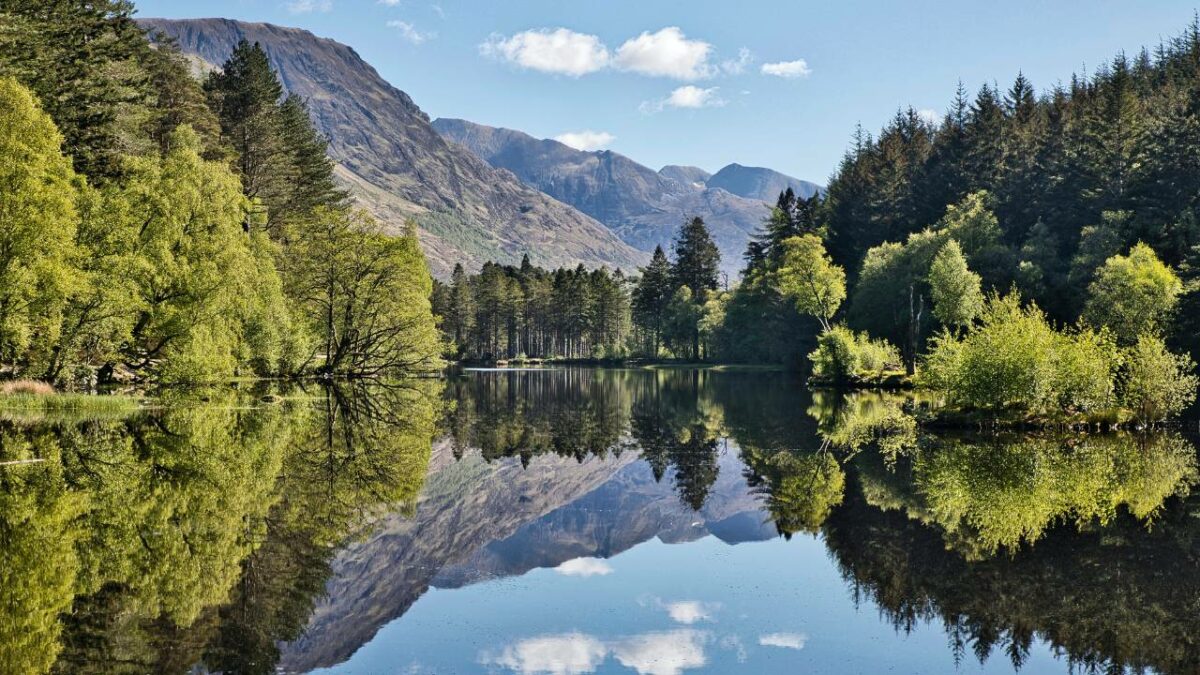
One of the best wild camping opportunities near the West Highland Way can be found just north of Sallochy Campsite. Officially known as the Lochan Maol Dhuinne Camping Management Area, this sprawling site has plenty of tent-pitching space. And, due to its location, it provides spectacular views over Loch Lomond and beyond.
The most important thing to say about this place is that it’s subject to camping bylaws from early spring to late summer. Those wishing to camp here on their way to Fort William must obtain a permit. Fortunately, the pass is cheap, easy to get, and can be booked up to a month in advance.
Lochan Maol Dhuinne can be accessed via walking trails from the West Highland Way. These footpaths are in good condition and can be easily traversed by most walkers, except those with extremely limited vision or mobility. Remember that this is a tent-only designated wild camping area – motorhomes are not allowed (you can’t access the place in one anyway).
Besides its spectacular lochside location, one particularly great thing about Lochan Maol Dhuinne Camping Management Area is that it’s close to three campsites I’ve described above – Sallochy, Cashel, and Milarrochy. So, if you ever get tired of sleeping under the stars, it won’t take more than an hour of backtracking to get to a real bed.
Rowchoish Bothy
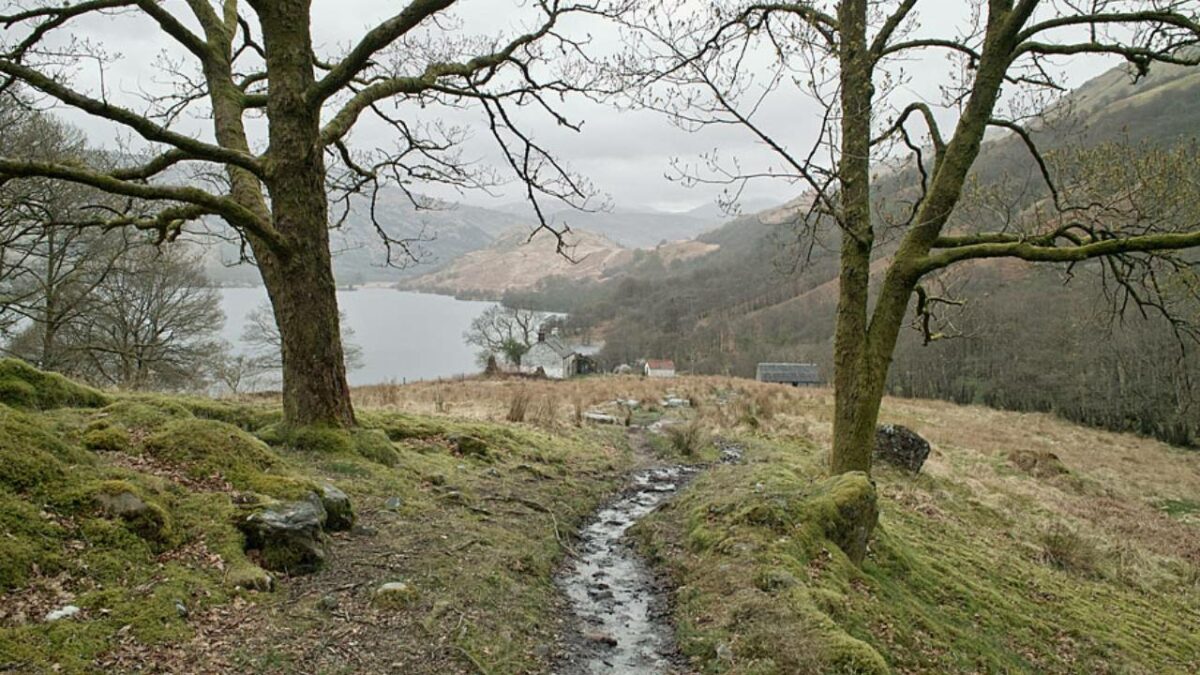
Managed by the Mountain Bothies Association, bothies are simple stone structures found everywhere throughout Scotland and used by hikers, mountain bikers, and campers. They are free to stay in and often feature a fireplace and additional facilities (if you’re lucky). There are nearly 100 bothies in Scotland, and the one that will interest you the most as a WHW walker is Rowchoish.
Set in dense woodland beside Loch Lomond, Rowchoish is one of Scotland’s most spacious – and most idyllic – bothies. In fact, the bothy has such a distinct atmosphere to it that it was featured in the (pretty eerie) movie Under the Skin, starring Scarlett Johansson. Have no worries, though: it’s a very welcoming place and one that’s used by hundreds of WHW walkers every year.
Unfortunately, this also means that the bothy is often occupied and you may have to pitch your tent next to it if you find it full. If you’re lucky and the place is not crowded, you can stay inside and use the bothy’s sleeping platform, benches, table, and open fireplace.
The last thing worth mentioning is that one must tread carefully while approaching the bothy from the south. The portion of the route between Rowardennan and this place is challenging – you’ll have to traverse small burns and climb over large rocks and tree roots. Still, that’s precisely what makes it one of the most exciting sections of the West Highland Way.
Doune Byre
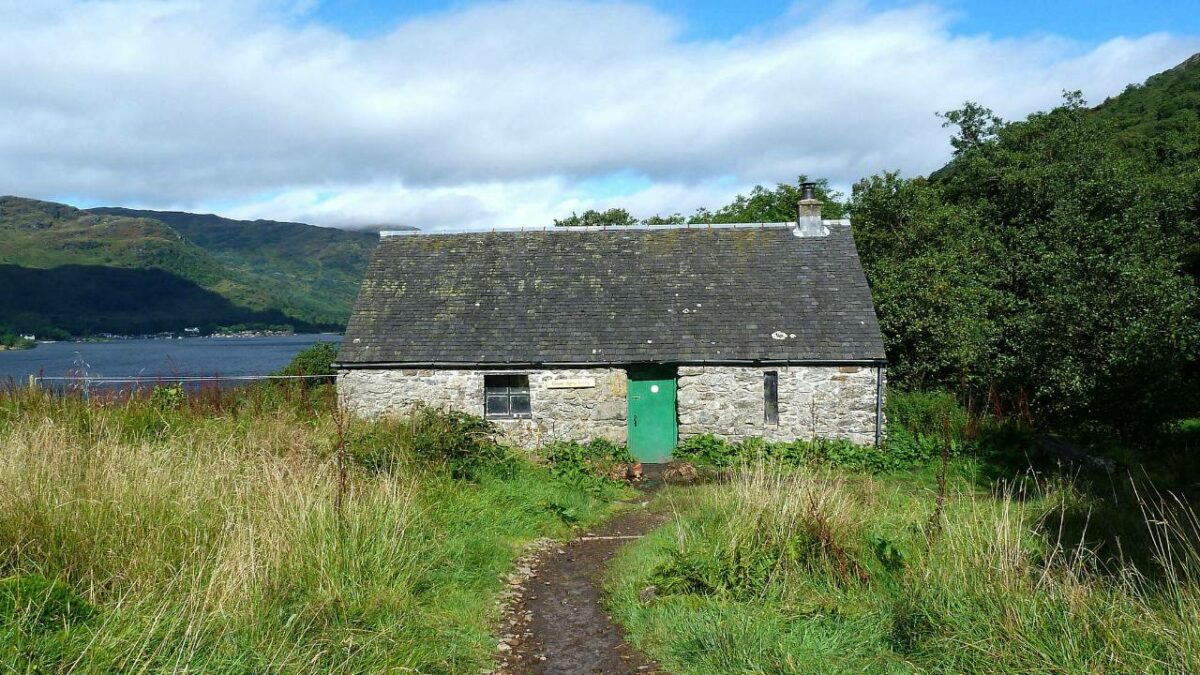
Situated right next to the route, Doune Byre is another bothy found on the eastern shore of Loch Lomond, less than three miles south of the hamlet of Inverarnan. Unlike some bothies in this part of Scotland, this one is in pretty good condition and provides complete protection from midges, rain, and wind. It features a sleeping platform and a fireplace.
The location of Doune Byre is both its most significant advantage and disadvantage. On the one hand, you’ll be right next to WHW and have a breathtaking view of Loch Lomond to the west. On the other hand, the proximity of the bothy to the route makes it a very popular stop for hikers, which is why it’s often busy or full of litter.
For that matter, be prepared to pitch your tent nearby. If it comes to that, you’ll have no trouble finding a flat, grassy spot between the bothy and the water’s edge. And in case of windy weather, cross the WHW and find a suitable camping spot in the wooded area to the east.
From here on, your WHW journey will take you further north along Loch Lomond to the point where River Falloch flows into the lake. Beinglas Campsite is only three miles to the north, in the village of Inverarnan, and can be your next camping destination.
Bridge of Orchy
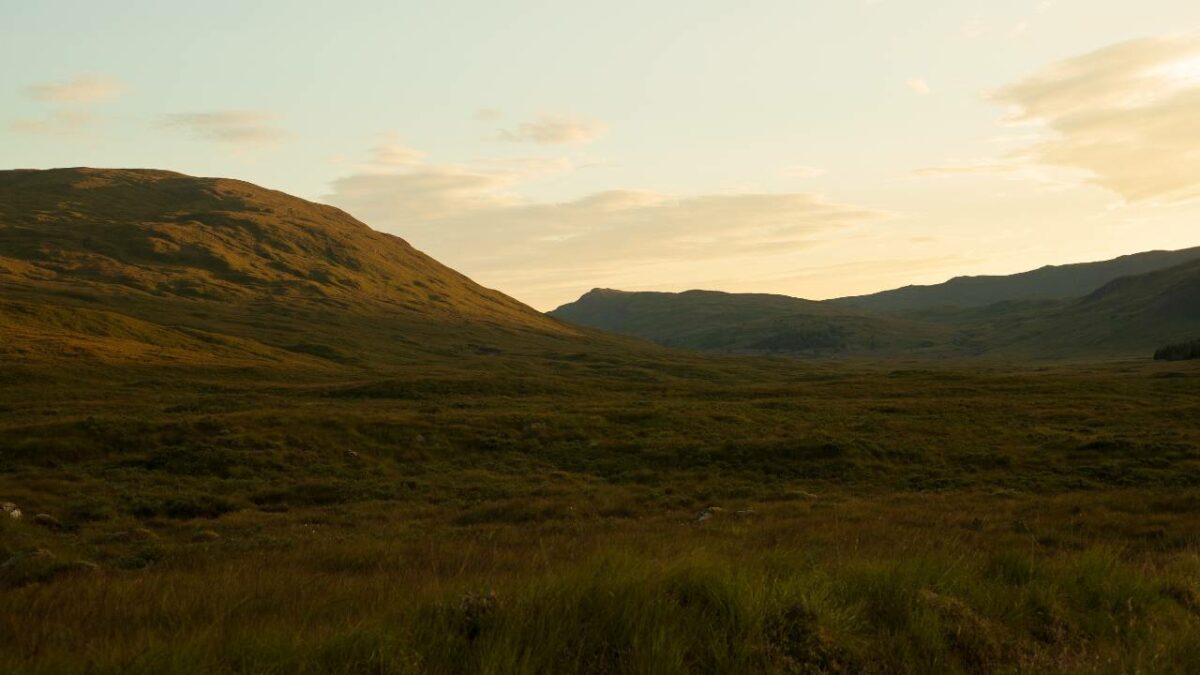
The next wild camping area can be found at Bridge of Orchy, a small village just south of Loch Tulla. The spot marked on the map is a free camping area past the hotel and on the other side of the bridge. It’s a small grassy area with several picnic tables beside River Orchy.
Almost every West Highland Way hiker stops to rest here, so don’t be surprised to find the place packed. What is more, the area is often quite polluted. Don’t be one of those irresponsible hikers – take your litter with you, and if you need to answer the “call of nature”, take a trowel and do the job far from the river.
This wild camping area has no facilities. However, hikers camping here can access potable water at the nearby hotel (the tap is right next to the entrance to the Bridge of Orchy Hotel). You can also use the hotel’s toilets if you leave a donation at the bar or purchase something to drink/eat. If you find yourself here in the summer, use the opportunity to soak your tired feet beneath the bridge.
The Bridge of Orchy is also an excellent base for exploring this part of Scotland. Some nearby places of interest worth visiting while staying in the village include Loch Tulla Viewpoint, Allt Kinglass Viaduct, Beinn Dorain, and Druimliart.
Kingshouse Wild Camping
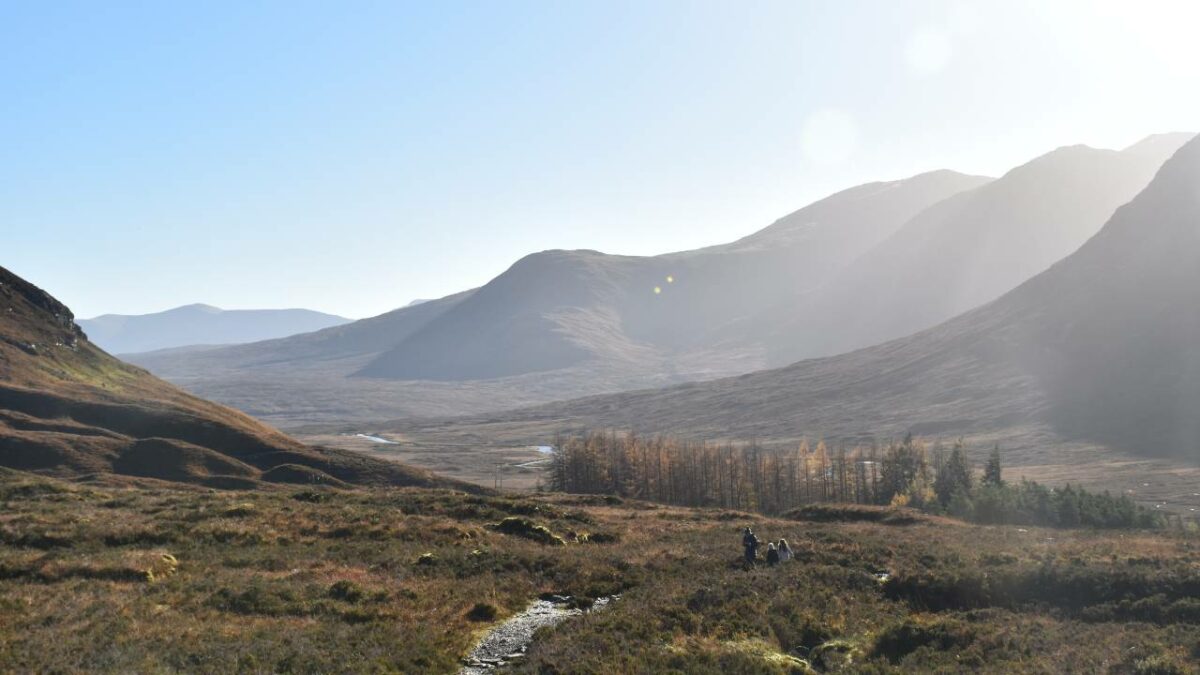
Situated in a remote part of Scotland – in the east of Glen Coe – Kingshouse Hotel is one of the country’s oldest licensed inns. This isolated pub/hotel was named after the fact that the British Army troops used it as barracks during the 18th-century Jacobite Rising. It was refurbished and extended quite recently and is now a popular stop for hikers walking the West Highland Way.
Those interested in wild camping along the route will appreciate that they can pitch a tent just across the stone bridge north of the hotel. While staying there, you can use the hotel’s restaurant, bar, and public toilets behind the bunkhouse.
However, you must be cautious while searching for a spot to pitch your tent. The area over the bridge doesn’t have a lot of flat spots and can be boggy at times. Still, it provides panoramic views of the Highlands in all directions, and its proximity to the hotel makes it easy to swap the tent for a real bed if you ever get tired of sleeping under the stars.
This can be your last wild camping stop on the West Highland Way – Fort William is only 20 miles to the north. Have a drink at the hotel’s famous Whisky Corner before you embark on the final phase of your journey!
Where to Next?
Where to Next?
As breathtaking as it is, the West Highland Way is just one of many picturesque long-distance walking routes in Scotland. If you’re hungry for more adventures and yearn to explore beyond the well-trodden path, there are a plethora of captivating alternatives awaiting your discovery.
From the rugged beauty of the Isle of Skye’s wild campsites to the dramatic landscapes of the Cairngorms National Park, Scotland has an abundance of scenic routes to satisfy your wanderlust.

I love hiking, backpacking, and camping. From the Camino de Santiago to the West Highland Way in Scotland or simply a great day hike on the weekend. Hiking refreshes me, my mind, and keeps my body reasonably fit. So far I have walked three Camino routes and many other long distance hikes in the UK, Canada, and around the rest of Europe. One of the best was my hike up Ben Nevis.

